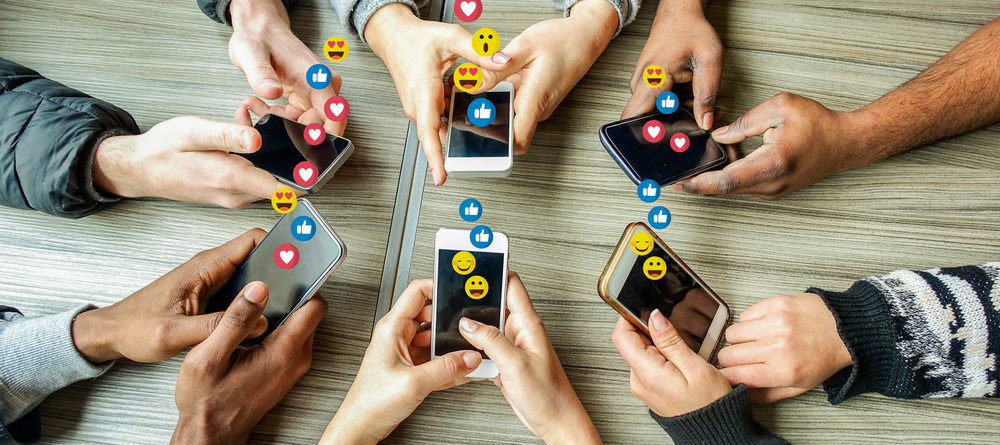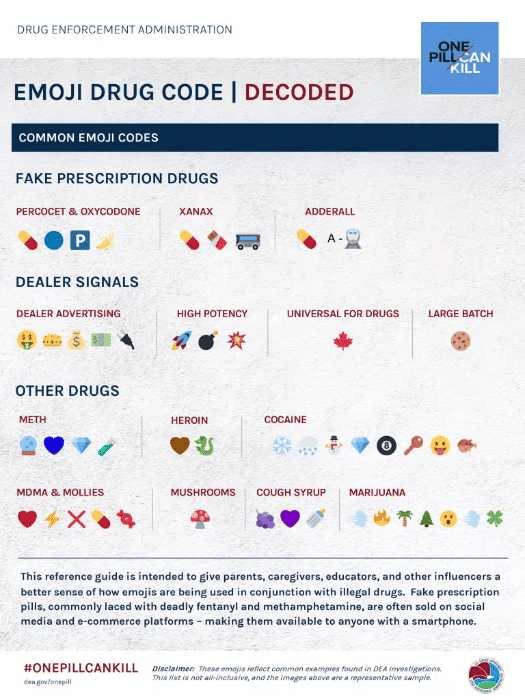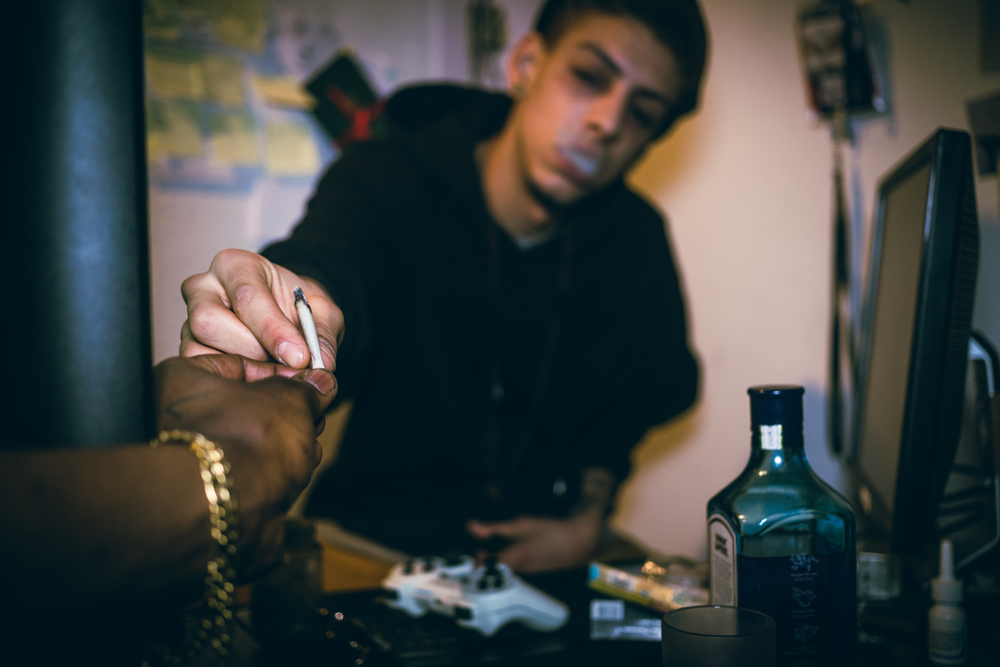What Emojis Are Kids Using to Buy & Sell Drugs?
When it comes to kids and drug use, there is a lot that parents need to be on the lookout for. Unfortunately, new research suggests that kids are now turning to slang terms and emojis to hide illicit drug use from their parents and the authorities. These covert techniques make it more difficult for adults to detect suspicious behavior, leaving kids at greater risk of addiction and negative consequences.
At the heart of this shift in communication is the rise of smartphone technology. Kids are constantly using emojis, texting slang terms, and engaging in other forms of digital communication on their mobile devices. But while these behaviors were once harmless ways of expressing themselves or staying connected with peers, they can now be used as a smokescreen for illicit drug use.

With the young ones using coded language or emojis to reference drugs when communicating online, it's much more difficult for parents to recognize troubling behavior. But luckily, the Drug Enforcement Administration (DEA) has shared a reference guide to give parents, educators, caregivers, and other influencers a better sense of how young people are using emojis in conjunction with illicit drugs.
According to the DEA, the coded language benefits drug dealers and youngsters seeking drugs. On the one hand, it protects the dealers from getting caught or detected. On the other, it allows minors to buy drugs without their parents or guardians knowing, as the emojis often seem harmless to an untrained eye. The secret codes and emojis also bypass law enforcement's monitoring of certain websites and social media platforms where illegal substances are bought and sold.
Emoji Drug Code: Decoded - A Look Into the DEA's Emoji Chart
Social media has long been a place where illegal drugs are sold. But in recent years, law enforcement agencies have begun to notice the new ways people use emojis to buy and sell drugs.
To share information, the Drug Enforcement Administration (DEA) offers this reference guide that decodes the meanings behind some of the most popular emojis used in conjunction with illegal drugs.

Fake Prescription Drug Examples
Minors and dealers use these emojis to refer to the following fake prescription drugs:
- Adderall: A yellow and red pill capsule emoji, the letter A, followed by a hyphen (A-), and a train emoji.
- Xanax: A yellow and red pill capsule emoji, a chocolate bar emoji, or a bus emoji.
- Percocet and Oxycodone: A yellow and red pill capsule emoji, a banana emoji, a blue circle emoji, or an emoji with the white letter P that's set against a blue square frame.
Dealer Signals Examples
Drug dealers also have a secret code explaining how the drugs in question may be delivered. For example, they may use a gas pump, car, or cellphone for in-person deliveries and a parachute or shipping box for mail deliveries. According to the DEA's chart, dealer signals include:
- Dollar face, crown, dollar bag, or socket plug for advertising their products and services.
- Rocket, grenade, or shooting star for high-potency drugs
- A cookie for large batch
- A red maple leaf for drugs
Other Drugs
The DEA further explained that other drugs have their corresponding emoji code as well, including:
- Cocaine: A snowflake or snow cloud, blowfish, snowman, diamond, eight-ball, or key emoji. It can also be a silly face emoji (often with the mouth open and tongue sticking out).
- Methamphetamine: A crystal ball, blue diamond, blue heart emoji, or test tube emoji.
- Heroin: A brown heart, dragon, or syringe emoji.
- MDMA/Ecstasy: A yellow and red pill capsule, red heart, lightning bolt, red X, or hard candy emoji.
- Mushrooms: A mushroom emoji.
- Cough syrup: A purple heart, grape, or showerhead emoji.
- Marijuana: A puff of air of blowing wind, fire, pine or palm tree, or clover emoji. It can also be a surprised face emoji with eyes and mouth open in an 'o' shape.
Other Emojis to Watch Out For
Beyond the emojis provided by the DEA, there are other creative ways in which people are using emojis to buy and sell drugs, including:
? / ? / ? / ? — Marijuana
? / ? / ? / ? — Heroin
⛷️ / ? / ? — Cocaine
? / ? — MDMA
? / ? — Smoking a joint
⚗️ — Used to indicate a bong
? — A large number of drugs
? — Cough syrup
? — Crystal meth
? — Prescription pills, heroin, or drugs generally
⛽ — "Gassed," intoxicated
? — To have fun, meaning intoxicated, to "blaze up" or "be lit"

Why is it Important to Know These Emojis?
Parents and guardians need to know these emojis because kids use them to buy and sell drugs. The emojis seem harmless to an untrained eye, but they have a secret code that kids and dealers use to talk about drugs. In the age where drug overdose deaths in adolescents have increased dramatically, it's more important than ever to uncover teen drug abuse before it's too late.
Drug use is a real problem among minors. While some might try out drugs because of peer pressure, many minors use drugs to cope with mental health disorders like stress or depression. Sadly, drug use is claiming more adolescents' lives each year.
According to a study in the Journal of the American Medical Association, overdose deaths among adolescents nearly doubled from 492 in 2019 to 954 in 2020 and increased another 20% in 2021. These deaths are mostly driven by illicit fentanyl, fentanyl analogs, methamphetamine, and cocaine, often in combination or adulterated forms.
As more kids adopt emojis for concealing illegal activity, parents and other concerned parties must take the time to understand their language patterns and educate themselves about this new form of drug-related communication. Watching for warning signs can help, but being proactive by learning the code can be even more effective in keeping minors safe.
What to Do When You Notice A Minor Using These Emojis for Drugs
If you see a minor using any of these emojis in an online chat, in person, or in a text message, it's important to take action. While not all drug-related emoji use is indicative of illegal activity, it's always best to err on the side of caution and address the issue directly with the child in question.
Discuss with them why drug use is dangerous and why you're concerned. If they are using drugs or binge drinking alcohol, help them get the treatment they need to overcome their drug use problem. Treatment centers offer comprehensive programs, including cognitive behavioral therapy and family therapy, that can help your child recover from addiction and lead a happy, healthy life. The programs can also arm them with coping skills to avoid relapse in the future.